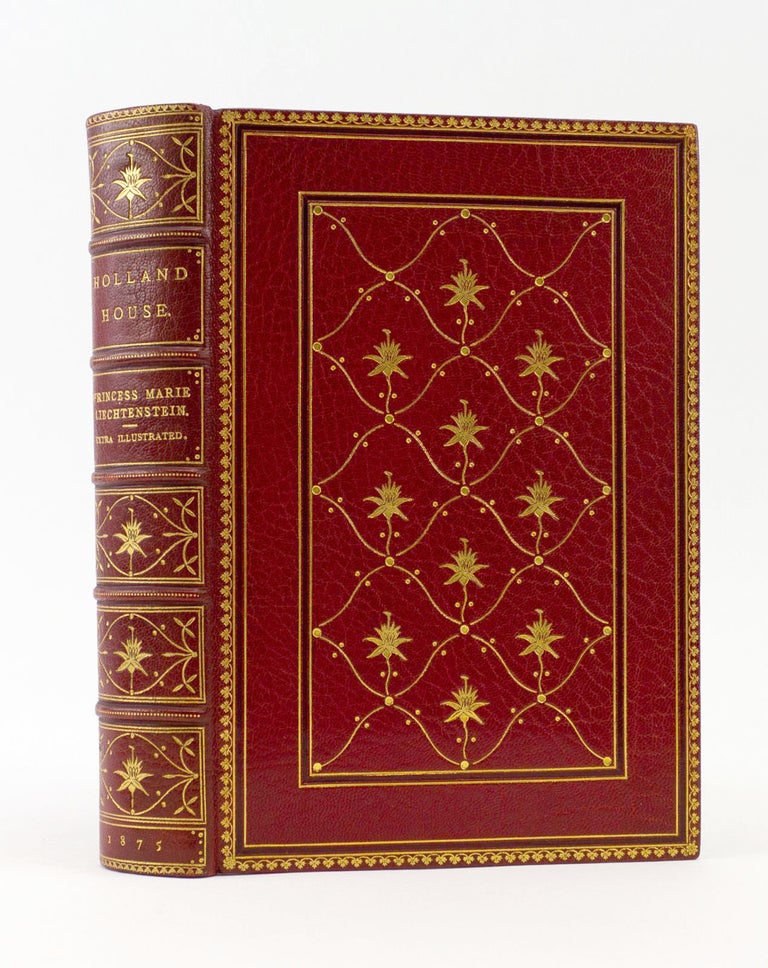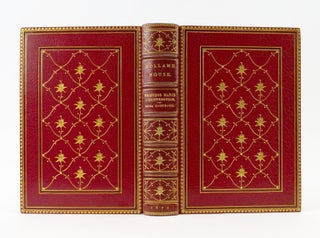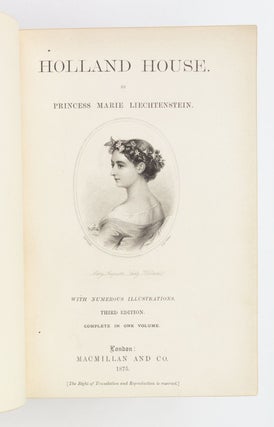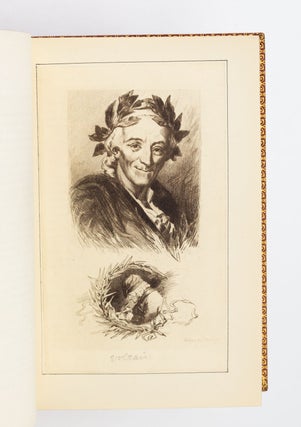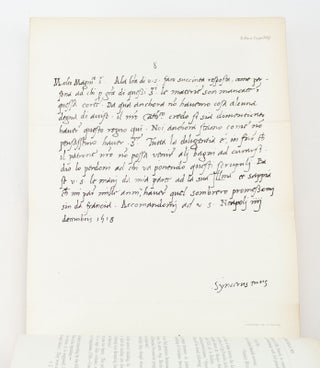HOLLAND HOUSE.
(London: Macmillan and Co., 1875). 226 x 151 mm. (9 x 6"). xx, 370 pp. Third Edition.
VERY PRETTY SCARLET CRUSHED MOROCCO, GILT, BY LUCIEN BROCA (stamp-signed on front turn-in), covers with decorative roll border and frame of gilt and blind rules, central panel diapered in ogival compartments, each containing a lily, raised bands, spine compartments gilt in a similar design, gilt lettering, densely gilt turn-ins, marbled endpapers, all edges gilt. With eight steel-engraved plates, including five folding manuscript facsimiles, 88 wood engravings (the majority head- and tailpieces but some full-page), and EXTRA-ILLUSTRATED with 24 engraved portraits of artists whose work is represented in the house and notable personages who visited there, all the added plates with tissue guards. ◆Spine just slightly and evenly darkened, a breath of rubbing to rear joint, mild foxing to a few of the inserted plates, but A VERY FINE COPY--the text clean and fresh, and the most attractive binding with virtually no signs of wear.
This is a handsomely bound and extra-illustrated history of one of England's most celebrated stately homes, Holland House, here minutely described with all its furnishings and grounds, along with numerous anecdotes of its distinguished inhabitants. Located in Kensington, which today has long been engulfed by greater London, the mansion began life as Cope Castle, built beginning in 1607 by Sir Walter Cope. From Sir Walter, the manor passed to his daughter Isabel, wife of Henry Rich, who became the first Earl of Holland in 1624. Like the king to whom he was loyal, Rich was beheaded in 1649. Later in the century, Holland House was rented by William Penn, and in 1767 it was bought by Henry Fox, first Lord Holland (1705-74), who held the position of leader of the House of Commons. In its day, Holland House hosted the leading lights of Europe, including Byron and the future American president James Monroe. Our author, Princess Marie Henriette Norberte of Liechtenstein (1843-1931), was motivated to write these memoirs by her friendship with the widow of the fourth Lord Holland. The very attractive binding is the work of French-born binder Lucien Broca (1829-1910), who immigrated to London in 1875. According to Tidcombe's "Women Bookbinders," Broca was a "superb trade finisher" who originally worked for Antoine Chatelin, then went into partnership with German émigré Simon Kauffmann from 1876 to 1889. Tidcombe and Sarah Prideaux's former pupil Katherine Adams believe that most of the bindings attributed to Prideaux between 1890 and 1900--some 290 volumes--were actually done by Broca, with Tidcombe giving the Frenchman credit for the "best Prideaux bindings." Prideaux never publicly acknowledged his work, perhaps for fear of disappointing fans of the most famous woman bookbinder in England. Broca was in business for himself as an "Art Binder" in 1901, and our binding was probably done about that time. The beauty of the present design is dependent on his perfection of finish--crispness of line and solidity of impression were Broca's hallmarks. (ST18174)
Price: $4,200.00

